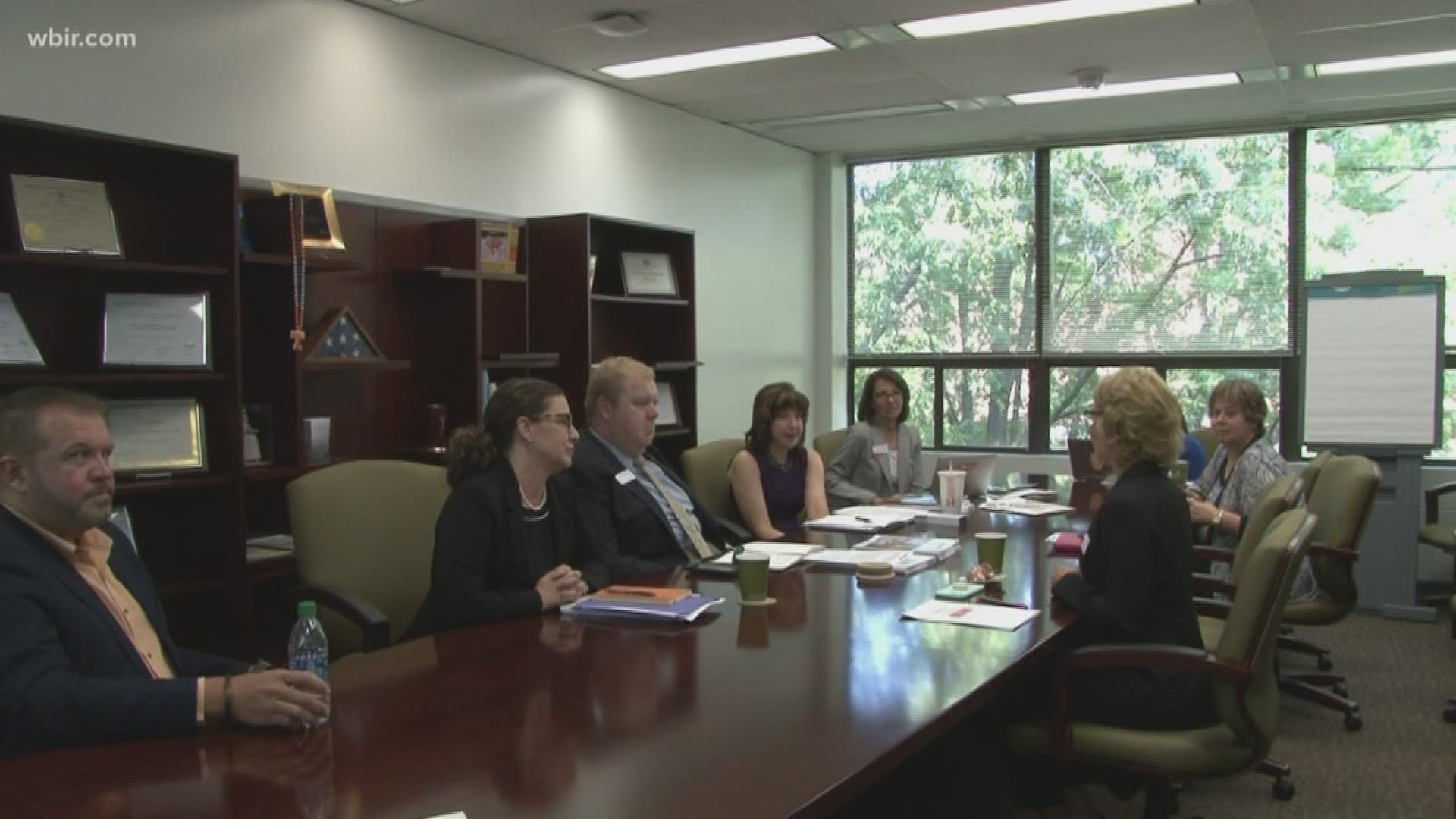KNOXVILLE, Tenn. — East Tennessee mayors and researchers from the University of Tennessee met with a national advisor Thursday to discuss what is still needed to fight the opioid crisis.
So far in September, four people have died from a suspected overdose and 171 people have died from a suspected overdose this year.
In 2018, 292 people died from suspected overdoses, according to the Knox County District Attorney General.
Anne Hazlett, the senior advisor for rural affairs for the White House National Office of Drug Enforcement Policy, came to Tennessee to speak with community leaders in rural areas.
She said she is hoping to gain insight into the challenges of fighting the opioid crisis.
Campbell County Mayor E. L. Morton and representatives from the Jefferson and Scott County mayoral offices attended the meeting. Representatives from the Sevierville mayoral office were also in attendance.
The group spoke to researchers from UT about the opioid issue. Their research is all local, so the numbers they presented were specific to Tennessee.
The meeting covered how the workforce is affected by the opioid crisis, contraceptive methods for women with abuse issues and how to reach people before they fall into the spiral of abuse.
The group also discussed ways to improve the criminal cycle that people with addiction issues face.
Hazlett said she wants to find what works so that she can share those techniques with other rural communities.
"Here in Tennessee, there's been a strong recognition that our rural areas are particularly impacted--the resource needs are great--but these are places for hope and opportunity for the future. We, in the federal government, want to be a partner to assist these leaders to build that vision for the future," Hazlett said.
In August, Knoxville Mayor Madeline Rogero, Knox County Mayor Glenn Jacobs, and hundreds of others attended a summit at UT to address the opioid crisis.
They said they want to curb the number of overdoses by 10 percent by September 2023. They also hope to reduce the number of nonfatal overdoses by 5 percent and increase the use of existing resources to obtain help by 20 percent.

